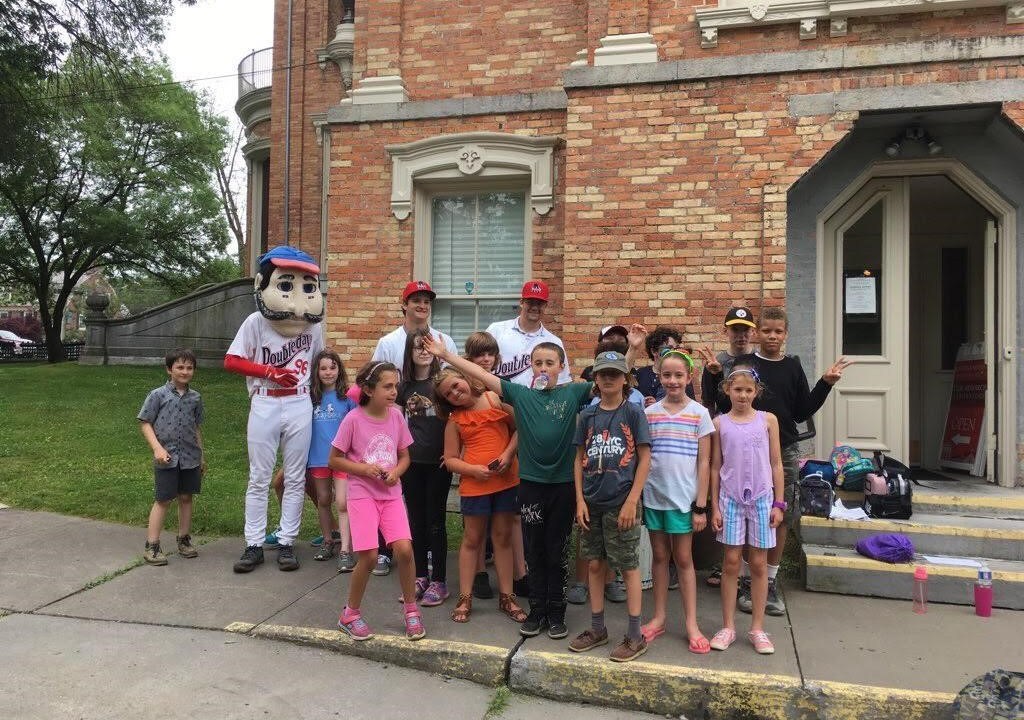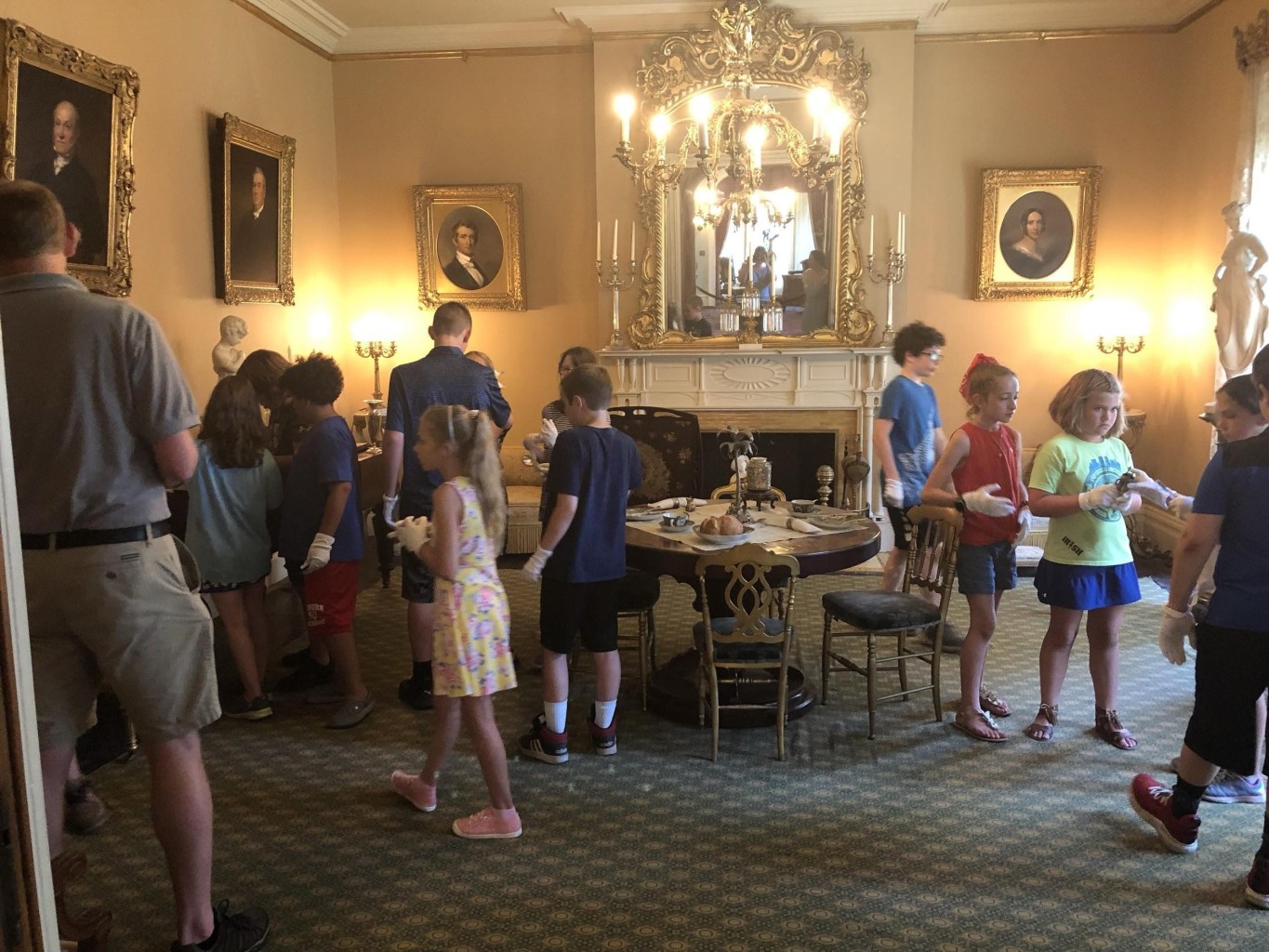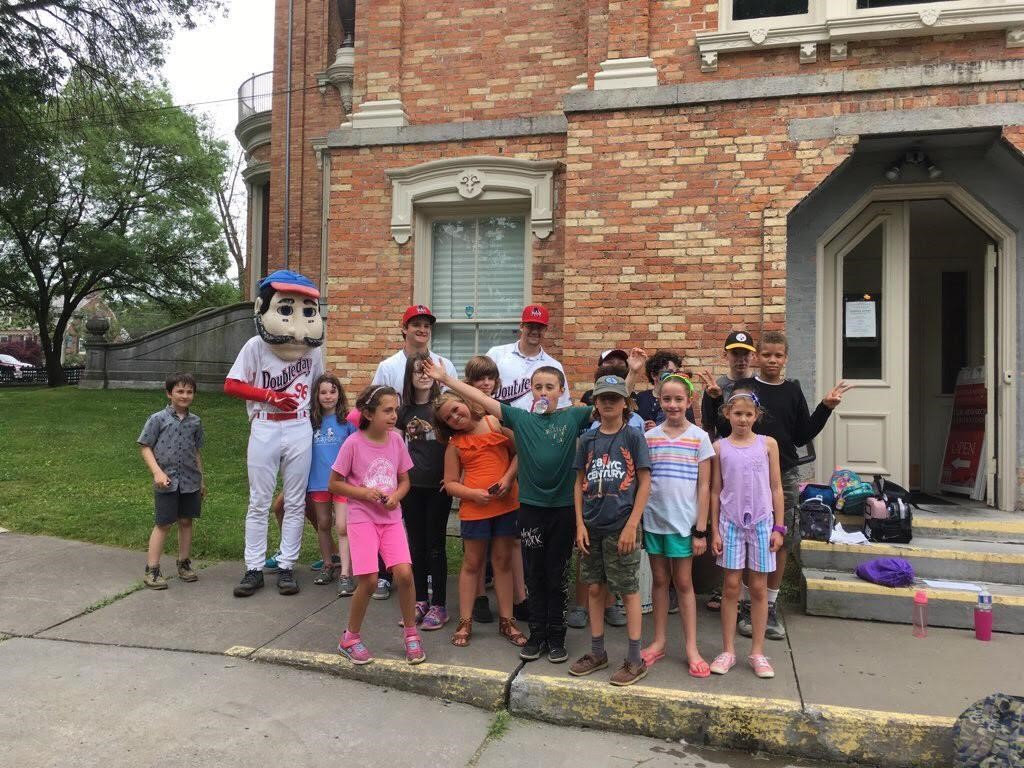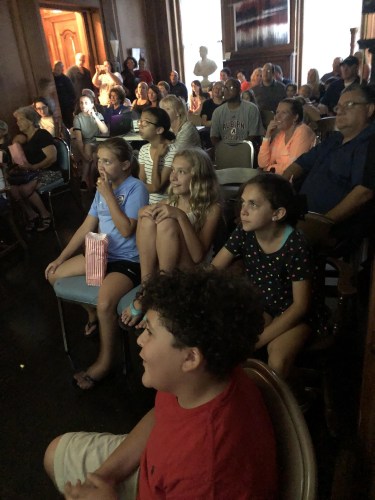
For museums with the resources and opportunities to do so, offering a summer camp is a great way to open up the doors to students whose guardians might need the structured daytime hours a camp provides, and to offer students an interactive learning experience sure to help point them in the path of becoming lifelong learners. That’s great in theory. But for many small to mid-sized museums, the reality is that running a summer camp of any size can seem overwhelming.
Take it from us, the Seward House Museum (SHM), located in “history’s hometown” of Auburn, New York (a small city in between Syracuse and Rochester). We started with a simple, two-day summer camp program, which became so popular and valued that parents in our community were literally begging us to do more. Knowing this demand existed, and that the camp fulfilled many objectives of our mission, we wanted to answer the call. But as a mid-sized museum with a staff of seven, only two of them full-time educators, expanding our camp structure was a daunting prospect. Doing so on our own would have required additional staff time, additional supplies, and other resources we simply did not have. Even allocating volunteers to camp was tricky, with so many needed on the frontlines during our summer rush. In short, we worried that altering our model would stretch us thin. It was a typical rock and a hard place situation: how could we expand our summer camp without either diluting the experience or draining precious few resources? It turned out we were in for a lesson on the value of partnerships. The answer laid in reaching out to the museum community surrounding us, and realizing that we weren’t the only institution looking for an expanded summer camp solution.

Community-Building and Creating a Camp
Although the camp would develop into a new concept, it was initially built from the groundwork laid by the SHM in years past. 2019 was the fourth year the museum had run a summer camp, with each year seeing a steady increase in the number of campers and community interest. We knew there was interest for extended camp programming, and we also knew Auburn’s history was interwoven in a manner that practically demanded collaboration to be fleshed out in its entirety. By turning to local partnerships, we were able to connect the two.
Our camp was a collaboration between three partners: the SHM, Harriet Tubman Home Inc./the National Park Service, and the Cayuga Museum of History and Art. All of these sites are located within a mile-and-a-half radius of us and are accessible to the immediate community within our targeted market. However, beyond the close proximity, what made this such an effective partnership was that the three sites shared a connected history and similar institutional missions.
For example, Harriet Tubman had a close relationship with the Sewards—the original owners of our house—and our Director of Education had recently been involved in creating an exhibit on the topic. In the process, he had been working with the National Park Service, which helps operate Tubman’s historical home as a museum, on researching for the exhibit and building ties between the two sites. In addition to exploring these connections between Seward and Tubman, staff from both sites had begun interpretive cross-training programs. This line of communication led to conversations about deeper levels of partnership, ranging across numerous possibilities: shared internships, collaborative field trip activities, joint programs, and more. But one topic kept coming up again and again: camp. We both saw how working together could elevate what our sites and others were offering individually around Auburn. From these early chats, the concept of a collaborative summer camp emerged.
In the midst of these talks, the nearby Cayuga Museum of History and Art came to us looking for ideas about how to launch their own summer camp from scratch. With a full-time staff of two, the Cayuga Museum certainly qualifies as a small museum. Yet it plays a large role in our community, interpreting all local history while paying specific attention to former Auburn resident Theodore Case, the inventor responsible for sound on film. Along with Seward and Tubman, Case helped put Auburn on the map. With this shared regional narrative between our three institutions, as well as similar education-oriented missions and a desire to increase programming aimed at younger audiences, banding together was a natural next step, and the camp was the perfect catalyst.
Once the premise of a community-structured camp was in place, representatives from the three sites decided on the details. The camp would run a full week from 9 a.m.–3 p.m. each day, with the hope of being accessible to working families. The theme would be “Hands-On History,” with the goal to provide an immersive and interactive historic experience for campers highlighting each site’s unique narrative, then tie them together to celebrate the community. For the Tubman house, this meant an archeological dig; for the SHM, Victorian-era games, tea, and a “white gloves” tour exploring the museum’s artifacts (pictured above); and for the Cayuga Museum of Art and History and Case Research Laboratory, developing movies that were then shown to campers and their families—the Case Lab, after all, was the birthplace of sound-on-film technology! These cross-curricular activities helped keep the camp engaging, and were guaranteed to build on something the campers were learning during the school year.
For as much as gathering partners was an exciting early step, it also posed logistical challenges during our tentative beginning. As we established everything from basic drop-off/pick-up arrangements to the thematic flow of the camp, we needed constant communication between the sites, even before the camp was underway. The team managed this through maintaining open lines of dialogue, scheduling regular meetings throughout the camp’s development, and building off the model of the pre-existing camp run by the SHM. The sites even worked together to develop their daily schedules for the camp, to make sure there were no overlapping activities.
At each collaborative planning session, new ideas, concepts, and improvements for the camp developed. Despite the sites’ similarities in focus and mission, there was enough variety between them to create a dynamic conversation, where the museums felt free to bounce new ideas off of each other. Along with this outburst of creative growth, and thanks to a grant acquired by our team (funders love to see cross-site collaboration on applications!) as well as donations by community members, we were able to offer scholarships to campers in need. From start to finish, keeping the camp accessible and centered on the community was a main component of its development, and one that we think made it successful.

The Camp, What We Learned, and Moving Forward
2019 was the best year of summer camp so far for SHM, thanks to these community partnerships with other sites and institutions. “Hands-On History” brought in record numbers of campers and their families, as labor costs (and other costs) declined significantly, with the financial burden spread out among three sites.
The highlight of the camp, by far, was a closing reception where campers were invited to bring their friends and families for a showing of the movies they made at the Cayuga Museum. Close to sixty people were in attendance to support the sixteen campers we had over the week, highlighting the impact the camp had on both campers and their families. Beyond that, seeing the campers proudly show off the museum and their cinematic efforts to their families highlighted the importance of museum education. The campers truly cared about what they managed to put together and what they learned, and while that’s a tough impact to quantify, it’s one that makes education and outreach crucial to museums—it’s why we do this, after all.
The camp developed as a response to a problem: we wanted to grow our offerings, but found several challenges preventing growth. When we applied a community-based approach by partnering with other historic museums in the area, we were able to overcome these obstacles and gain benefits for the sites and campers alike. These benefits included:
- Strengthened name recognition and access to new audiences for each site
- An immersive and community-pride-building experience for campers
- Alleviated pressure on logistics and finances for each site
- A constant change of scenery and experiences for campers
- An environment of growth and collaboration for the museums, with access to new historic interpretations and a precedent for future partnerships between sites

After the success of this year, we plan on offering an additional week of camp next summer to accommodate the growth, and we hope to bring another institution into the mix. It is perhaps a cliché (though one grounded in truth!) that “many hands make light work.” Running the camp became significantly easier through a shared effort—this was perhaps the most immediate byproduct of the partnership—but more importantly, perhaps, was that the partnership allowed each site to focus on their strengths. While it required constant communication, something that can be difficult, the partnership developed important connections which elevated the camp and have since led to several partnered events. With everybody involved taking the time to meet and caring passionately about the success of the venture, the final product was elevated to something beyond what any one site could manage. The main takeaway, however, was that when museums and cultural sites band together to develop programming, everybody wins.
For anybody interested in learning more about the “Hands-On History” camp, the SHM can be reached by email at outreach@sewardhouse.org or education@sewardhouse.org.
About the authors:
Jeff Ludwig has been the Director of Education at the Seward House Museum since July 2015. He holds a PhD in History from the University of Rochester and an MA in History from Villanova University.
Zachary Finn is the Education and Outreach Coordinator at the Seward House Museum in Auburn, New York. He earned his BA in History from Lycoming College, and his MA in American History from SUNY Brockport.







